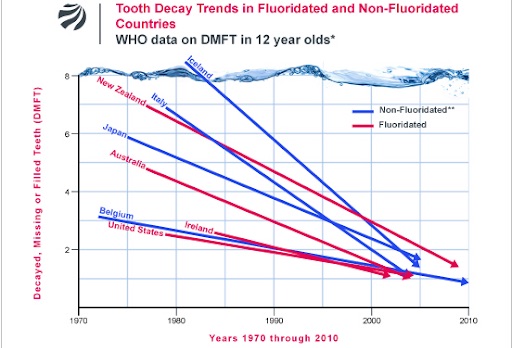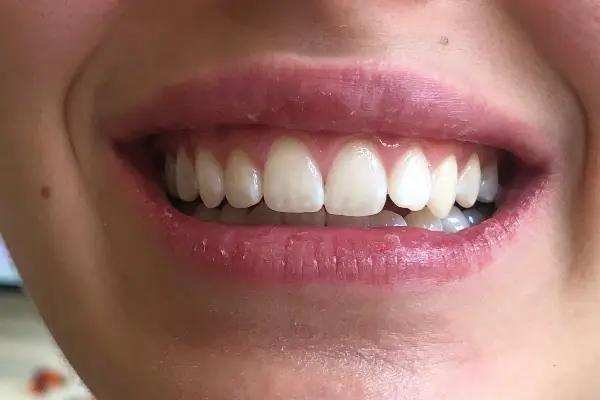Tooth decay is a widespread problem – not only in New Zealand. With the nationwide fluoridation of drinking water in NZ, the government intends to reduce this dental disease in the future. However, there are also many voices against this step of the government.
Fluoride: The controversial substance in drinking water
Fluorides are known to most people only from toothpaste. When added to toothpaste, they are supposed to have an enamel-hardening effect and thus counteract the development of tooth decay. The addition of fluorides to drinking water, common in many countries, is therefore considered critical. However, the dental caries rate is significantly lower in regions with a higher fluoride level in the drinking water than in other world areas. For this reason, in countries such as Australia, the US, Great Britain, South America and Switzerland, the drinking water is enriched with a certain amount of fluoride. However, studies now question the relationship between fluoridation and the development of dental caries.
Now, the New Zealand government has also decided to enrich New Zealanders’ drinking water with fluoride by law. The bill on fluoridation of drinking water passed in its third reading. In the final step, the Crown will give royal assent. In future, New Zealand will add fluoride nationwide to its drinking water to combat tooth decay more effectively.

What is fluoride and where does it occur?
Fluorides (F-) are the element fluorine (F) salts. They occur in small quantities in the human organism, like teeth and bones. However, fluorine is now no longer considered an essential trace element. Fluoride naturally occurs in soils and thus also in spring and groundwater in varying concentrations. Fluoride is also present in food in minimal amounts. This includes seafood, soy products, nuts, lake fish, black tea and meat. A specific intake through eating and drinking is generally considered unproblematic. However, elevated fluoride concentrations can occur in drinking water depending on the location, which some researchers consider a concern.
Adding fluoride to table salt, toothpaste, and drinking water intends to increase resistance to tooth decay in humans. However, excessive fluoride intake can lead to severe damage.
What is the fluoridation of drinking water NZ?
However, fluorides are already present in soils and, thus, also in spring and groundwater at varying levels. There are substantial regional differences in the concentration of fluoride. Depending on location, this can lead to elevated fluoride concentrations in drinking water, which some researchers consider to be of concern. In some countries/areas with low, natural fluoride levels in drinking water, taking fluoride salts, fluoride tablets, or fluoride toothpaste may be unproblematic or even recommended. Meanwhile, in areas with elevated fluoride levels, it is best to avoid the artificial addition of fluoride, especially to drinking water.
Drinking water fluoridation is raising the fluoride concentration in drinking water with low fluoride content to a level following recommendations for optimal oral health. Fluorination of drinking water is a common practice. In Europe, for example, this is practised in Great Britain, Ireland and Switzerland. Moreover, the US, Canada, Brazil and Australia also fluoridate their drinking water to improve dental health and as a preventive measure against bone disease.

Fluoridation of drinking water NZ
The WHO recommends a guideline value of 1.5 mg/litre (parts per million) for fluoride in drinking water. However, the organisation emphasises that it is essential to consider national conditions when setting national standards for fluoride levels. In New Zealand, the naturally occurring fluoride in the water supply is relatively low. The Drinking Water Standards for New Zealand 2005 (revised 2018) concur with the advice of the WHO guideline value of 1.5 mg/litre of fluoride in drinking water. The New Zealand Ministry of Health recommends fortifying drinking water with fluoride at 0.7 – 1.0 mg/L. This way, the government is following international examples to prevent dental caries.
In the past, the district health offices and local authorities were responsible for the population’s health. These have decided to adjust the fluoride level in their local drinking water. “The discussion and debate around the value of community water fluoridation is an ongoing issue for local government in New Zealand.” But that is over now! With the new law on nationwide fluoridation of drinking water in New Zealand coming into force, the sole responsibility passes to the Director-General of Health. In Future, Dr Bloomfield will have the exclusive power of water fluoridation. Currently, nearly 60% of the New Zealand population connected to the piped water supply network receives fluoridated water or about 2.5 million people. In the future, only households on tank water will not have fluoride in their drinking water.
The positive effects of fluorides
Fluorides are primarily known for their positive effects in tooth decay prevention. This is also the main argument for the artificial addition of fluorine in drinking water, toothpaste or table salt. Tooth enamel contains certain hydroxyapatite compounds. However, acids can attack these compounds and be replaced by them when fluoride availability increases. This makes the enamel less sensitive to acids and thus more resistant to tooth decay.
As early as the 1940s, the US was the first country to conduct fluoride experiments with fluoride in drinking water. Various studies confirmed the positive results of this measure. According to these, children’s average tooth decay incidence decreases with increasing fluoride concentration in drinking water. Based on these research results, drinking water fluoridation was introduced in the USA largely nationwide. And other countries, such as Ireland, Canada and Australia, also decided to add fluoride to their drinking water.
In New Zealand, the number of children suffering from tooth decay has decreased over the last 20 years. Dental health has improved steadily among 5-year-olds and children in school year 8. However, 40% of children still suffer from dental caries. Although, there are also significant regional and socio-economic differences in the distribution of these numbers.

The adverse effects of fluorides
Proponents of artificially added fluoride emphasise the positive effects in children since it is precisely in this age group that there is an increased risk of tooth decay. However, long-term, increased exposure to fluoride during tooth development in children can lead to so-called fluorosis. It is an enamel staining of the teeth caused by fluoride deposits, which can occur from a daily dose of two milligrams of fluorine per day.
In addition to this problem, which can be a nuisance, fluorine can also cause severe poisoning symptoms in the event of overdosage. While the acutely toxic fluoride dose is 5-10 milligrams per kilogram of body weight, serious problems can already occur at significantly lower doses.
However, tooth enamel, bones, and many other tissues tend to deposit fluoride. It alters various enzymes in the organism, and a high fluoride concentration can affect the immune system, blood circulation, respiratory organs, liver and kidneys, and brain functions. Thus, many toxic and still unclear modes of action counter the beneficial effects on the incidence of tooth decay. In higher concentrations, fluoride might be even carcinogenic. It is also increasingly associated with brain dysfunctions such as dementia or ADHD (attention deficit disorder, poor concentration, hyperactivity).

Conclusion & Solutions for fluoride in your drinking water
Drinking water fluoridation is the subject of controversial scientific debate and is rejected by many as a form of compulsory medication. Fluorine tablets, fluorinated table salt and fluorine-containing toothpaste provide the population with a flexible individual intake of fluorine. Moreover, drinking water fluoridation is tantamount to compulsory medication since everyone would be affected, whether they wanted to or not. In contrast, everyone should be free to decide if they wish to use or give their children fluoridated table salt, which has been available for years, or dental care products containing fluoride.
The effects of fluoride or drinking water fluoridation have not been thoroughly researched and clarified. However, many scientists already see a connection between too much fluoride in the organism and declining intelligence, disturbances of the hormonal system, bone loss, a higher tendency to bone fractures, and thyroid dysfunctions. Therefore, we do not exaggerate but recommend appropriate caution to be sceptical about drinking water fluoridation.

Reverse Osmosis for treating fluoridation of drinking water NZ
Ultimately, if you want to banish fluoride from your drinking water, there are several options. The most well-known and effective solution to remove fluoride is a reverse osmosis (RO) system to purify your drinking water. This filter system is permanently installed under your kitchen bench and thus only cleans the drinking water. Usually, a whole house filtration system is not necessary and is also far too expensive. In addition to fluoride, RO also filters other substances such as chlorine, bacteria and germs from your drinking water.

The bottom line is, …
Living, pure water is at least as important as healthy food. Everyone in New Zealand has the right to healthy drinking water from the tap, no matter what water source provides it. Aqua Works offers appropriate water filtration technologies if you decide you don’t want fluoride in your drinking water. With our products, we guarantee you fluoride-free drinking water. Thus, if it is your decision how much fluoride you want to ingest, for example, through food or using fluoridated toothpaste. Call us today at 0800 Aqua Works to schedule a service appointment.

